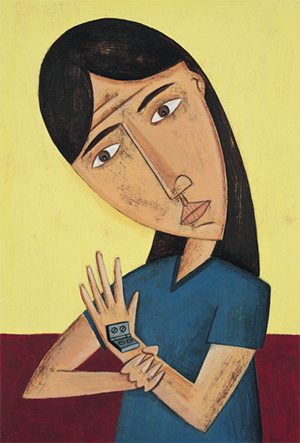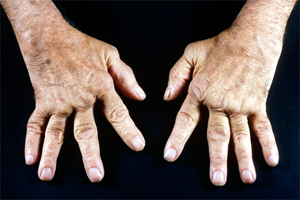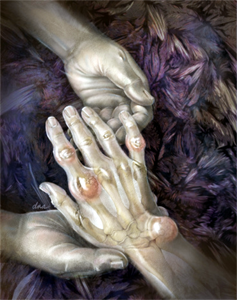Dec 21, 2025
Dec 21, 2025
 Arthritis is a disease of joints, characterised by pain, swelling (inflammation), and stiffness. It is probably the most common of all disabling diseases. Strictly speaking, arthritis literally means (arthro) joint, and (itis) inflammation. Rheumatism on the other hand is a general term for pain and stiffness in the muscles, joints, ligaments, tendons and bones, i.e., structures around the joints. Arthritis and rheumatism are terms used interchangeably by the layman for any abnormal condition of the joints or related structures.
Arthritis is a disease of joints, characterised by pain, swelling (inflammation), and stiffness. It is probably the most common of all disabling diseases. Strictly speaking, arthritis literally means (arthro) joint, and (itis) inflammation. Rheumatism on the other hand is a general term for pain and stiffness in the muscles, joints, ligaments, tendons and bones, i.e., structures around the joints. Arthritis and rheumatism are terms used interchangeably by the layman for any abnormal condition of the joints or related structures.
Arthritis is not a single disorder, but over a hundred types of arthritis are known. They are classified according to their specific signs, symptoms, and possible causes. The common types are Osteoarthritis, Rheumatoid arthritis, Gout, Infective arthritis, Ankylosing spondylitis, and soft tissue rheumatism like bursitis, and tendinitis resulting from injuries leading to swelling, pain, muscle spasm, and stiffness.
Types of Arthritis
Following are the six common types of arthritis:
 Rheumatoid arthritis: It is the most severe type of inflammatory joint disease. It is an autoimmune disorder in which the body's immune system itself damages joints and surrounding soft tissues. Small joints of the hands, wrists, feet, and arms become extremely painful, stiff, and deformed leading to marked disability. Typically it occurs in a younger group of people, and is more common in women.
Rheumatoid arthritis: It is the most severe type of inflammatory joint disease. It is an autoimmune disorder in which the body's immune system itself damages joints and surrounding soft tissues. Small joints of the hands, wrists, feet, and arms become extremely painful, stiff, and deformed leading to marked disability. Typically it occurs in a younger group of people, and is more common in women. Gouty arthritis: Gout is said to be a rich man's disease due to over-consumption of alcohol, non-vegetarian food, and coffee which is likely to raise blood uric acid levels. Gout is a purine metabolism disorder, resulting in raised blood uric acid levels (hyperuricaemia). This is due to overproduction or faulty elimination of uric acid from the body. Crystals of uric acid are deposited in joints, skin, kidneys, and other tissues. It usually involves one or two large joints in the body. Frequently the great toe is involved, characterised by pain, swelling, marked tenderness with signs of inflammation.
Gouty arthritis: Gout is said to be a rich man's disease due to over-consumption of alcohol, non-vegetarian food, and coffee which is likely to raise blood uric acid levels. Gout is a purine metabolism disorder, resulting in raised blood uric acid levels (hyperuricaemia). This is due to overproduction or faulty elimination of uric acid from the body. Crystals of uric acid are deposited in joints, skin, kidneys, and other tissues. It usually involves one or two large joints in the body. Frequently the great toe is involved, characterised by pain, swelling, marked tenderness with signs of inflammation.Arthritis at best is not completely curable. Some types are certainly controllable depending on the cause. There a specific treatments for some types of arthritis - antibiotics for infective arthritis; non-steroidal anti-inflammatory drugs (NSAIDs) for osteoarthritis and rheumatoid arthritis; colchicine and allopurinol for gout. Other agents employed to offer relief and control the arthritic process include gold compounds, chelating agents, corticosteroids, chloroquine, and immunosuppressive agents.
It is claimed that gold compounds to an extent reverse the arthritic process. Physiotherapy and supervised exercises help to keep joint deformity to a minimum. Obese people with arthritis involving weight-bearing joints are advised to lose weight. When medical treatment fails, corrective surgery and major joint replacement of the severely deformed joint may be considered.
Images (c) Gettyimages.com
15-Sep-2012
More by : Dr. Frank S. K. Barar